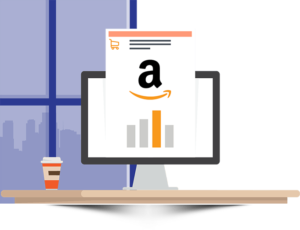
Unlocking Amazon Success: Mastering Total ACOS Optimization
Introduction: In the dynamic realm of Amazon advertising, success hinges on mastering key metrics, and
When getting started on your journey to PPC wizardry, you’ll come across a plethora of new words and phrases to get your head around. This PPC guide is written by ppc trained experts. Below is an easy-to-digest list with everything you need to know. (Feel free to bookmark for future reference!)
Also known as split testing, A/B testing in this context involves experimenting with different versions of ad creative to see which performs best. You can test landing pages, ad copy, images, audience targeting and more.
Ad extensions appear underneath the ad itself to add more information to the person who sees the ad. This may include location information, phone numbers, USPs or additional links. There are plenty of types of ad extensions to choose from and create.
An ad group is a group of adverts that share a theme, with the same target audience. A fashion eCommerce store would have multiple ads in each ad group for each of its products or product categories. For example, women’s jackets and men’s jackets would be part of two different ad groups, as they have two distinct audiences. However, both ad groups may appear under the same campaign for jackets, outerwear or coats.
Ad rank is simply the position that the ad appears in on the SERP. The first ad on the page would be assigned ad rank 1, the second ad rank 2 and so on.
The measure of how closely your ad matches what the user is searching for. This can be above average, average or below average.
Attribution models help marketers to accurately pinpoint the source or sources of a conversion. Some attribution models such as ‘Last click’ would give 100% of the credit to the last touchpoint the user engaged with before converting, whereas ‘First click’ would do the opposite. There’s also ‘Last non-direct click’, ‘linear’, ‘time-decay’ and ‘position-based’ attribution models.
The auction is the process that happens each time someone types a search query into Google or is targeted by Facebook marketing (when ads are eligible to show). Each platform has its own considerations based on maximum bid, quality score and ad relevance. Think of it as an eBay auction, with multiple businesses placing bids, increasing £0.01 a time, to show their ad in front of that customer. Follow all steps of this ppc guide.
Business to business. For businesses that sell products or supply services to other businesses.
Business to consumer. For businesses that sell products or supply services to customers.
A keyword status that appears when your maximum bid (or Max. CPC) is not high enough to show your ad on the first page of the SERP.
A keyword status that appears when your maximum bid (or Max. CPC) is not high enough to show your ad at the top of the page on the SERP.
In the auction process, each business offers a maximum bid that they’re willing to pay to show their ad to that particular customer.
1/3 of the forms of keyword available. Broad match keywords will enter the auction process when someone searches for that keyword, variations of it or related topics. Generates the most impressions and potentially clicks, but not much opportunity to qualify leads. Broad match keywords are known as ‘loose matching’ — negative keywords should be added to relevant campaigns to avoid wastage.
Your daily (and/or monthly) limit of what you’re happy to spend on clicks and conversions. (Although Google do say daily costs can vary by up to 20%, but your monthly budget will never exceed what you’ve set — it’ll only vary with the ebbs and flows of traffic each week).
A set of ad groups organized into relevant categories. Using the ad group example above, ‘jackets’ would be one campaign with separate ad groups for women’s jackets and men’s jackets.
Customer lifetime value. The average amount that a customer is ‘worth’ to a business across the entire length of their relationship.
Multiply your average order total by the average number of purchases made by all customers in a year — this is your customer value. Then, multiply this number by your average retention years. An average order total of £20 multiplied by an average of 3 purchases a year gives you a customer value of £60. Over the span of two years of retention, the CLTV is £120. Follow all remaining parts of ppc guide.
Not (necessarily) synonymous with just sales. A conversion can be any interaction after clicking on your ad. This could be a submitted lead, a phone call, a video view, an app download, purchase or another valuable action.
Of the people that clicked your ad, what percentage of those converted? The standard goal is 2–3%, although this is often higher for brand campaigns.
Cost per conversion. How much does it cost to convert a customer?
Total ad spend divided by the volume of conversions. £100 spent and 10 conversions gives a cost/conv. of £10.
Cost per acquisition. How much does it cost to generate a new customer?
Total ad spend divided by the number of new customers acquired. £100 spent and 10 conversions gives a CPA of £10.
Cost per click. How much does it cost per click?
Total cost divided by the number of clicks. If £10 is spent and 100 clicks are generated, this gives a CPC of £0.10.
Cost per lead. How much does it cost to generate a lead?
Total cost divided by the volume of leads. If £10 is spent and 1 lead is submitted, this gives a CPL of £10.00.
Cost per thousand (mille). How much does it cost to gain a thousand impressions?
Total cost divided by the total number of impressions. Then multiply this result by 1,000. If £10 is spent and 1,000 impressions are gained, this gives a CPM of £10.00.
CPV
Cost per view. How much does it cost to generate a single view?
Total cost divided by the total number of views. If £10 is spent and 10,000 views are gained, this gives a CPM of £0.001.
Click-through rate. Put simply, how many of those who saw an advert clicked on it. A target goal of 3%+ for search campaigns.
The total number of clicks is divided by the number of impressions. If 10 people clicked on an ad that 100 people saw, the CTR would be 0.10%.
Your display URL helps searchers understand where they’ll land on your website if they click your ad. This is much more specific and can increase CTR.
Instead of displaying https://myshop.com/clothes/outdoor/womens/jumpers/ as your landing page, you can use a Display URL to create https://myshop.com/womens-jumpers — you have two optional path fields to add information to with 15 characters each. The user will still arrive at the same Final URL — explained below. This ppc guide is begginer friendly.
Enhanced cost per click. Instead of manual bidding where you set a maximum bid for each keyword, ECPC automatically adjusts your bids to suit your goals with your maximum budget in mind.
ECPC works by automatically adjusting your manual bids for clicks that seem more or less likely to lead to a sale or conversion on your website.
1/3 of the forms of keyword available. Exact match keywords use square brackets (e.g. [keyword]) to specify that an ad should only be displayed if the user’s search query is exactly the same or a very close variant of your keyword. As a result, you’ll receive fewer clicks but may generate higher-quality and better-qualified traffic. Exact match keywords are known as ‘tight matching’.
Soon to be unsupported by Google, expanded text ads use three static headlines (30 characters) and two static descriptions (90 characters). From June 2022, editing current expanded text ads and creating new ones will no longer be allowed — however, ads created before this point can still run. Instead, Google is encouraging businesses to use RSAs or Responsive Search Ads.
Ad extensions are additional pieces of information that can appear underneath your paid ads on the SERP. Here’s a complete guide to everything you need to know about ad extensions.
The Final URL is the eventual page on your website that you want users to arrive at — your landing page.
Impressions
Impressions are the total number of times that your content has been displayed. If one user sees the same piece of content fifteen times, that’s fifteen impressions. Impressions are counted whether the user clicks on an ad or not.
Impression share is the % of impressions that you received vs the total number of impressions that they could’ve received.
Each keyword is a word (or phrase) that is used to show your ads to an audience who are using a matching search term. In your ad groups, you may use one or several keywords to tell search engines which search terms your ads should appear for.
A free feature in Google Ads that allows you to plan which keywords to use in your ad groups by giving you data, offering new keyword ideas and giving performance estimates.
The page of your website that you want users to ‘land’ on after clicking your ad. Instead of sending all visitors to the homepage, you’ll want to optimize your user journey by sending them to the most relevant page to them based on their search term.
Unlike a keyword, a long-tail keyword is longer and far more specific. A keyword could be ‘men’s jacket’, whereas a long-tail keyword could be ‘blue men’s jacket size medium’. Long-tail keywords have lower search volumes as they are niche, but they generally deliver higher-quality traffic.
A keyword status that appears when your keywords have very little (if any) search traffic and are therefore not relevant.
Manual cost per click. Setting a maximum bid for each keyword (in bulk or individually) to appear. This is a non-automated bidding strategy.
While a keyword specifies when to show certain ads based on the user’s search term, a negative keyword does exactly the opposite by telling the search engine not to show your ads when certain keywords are used. Read this ppc guide every time when you feel any difficulty.
1/3 of the forms of keyword available. Phrase match keywords use square brackets (e.g. “keyword”) to specify that an ad should only be displayed if the user’s search query includes your phrase match keyword as a whole. As a result, you’ll receive more clicks than exact match, but not as many as broad match. Phrase match keywords are known as ‘moderate matching’.
Pay per click. A form of digital marketing activity where businesses only pay if their ad was clicked, rather than for impressions or reach.
This is a measure of how relevant your keywords are to your ads and landing pages. Quality scores are measured from 1–10 (1 being the worst, 10 the best) and are used in the auction process to rank the relevance of your business’ keyword vs. that of your competitor.
Unlike impressions, reach is based on the total number of people who see your content. Whether one particular user sees the same piece of content once or fifteen times, the reach will stay the same.
Calculate your ROAS by dividing your total revenue (generated by ads) by the total amount of money you spent on ads. If you spent £100 on ads and sold £1,000 of product, your ROAS would be 0.1 or 10%.
Responsive search ads. By adding up to 15 headline descriptions (30 characters) and four descriptions (90 characters), Google automatically tests and optimizes the best-performing combinations of ad copy in each auction.
The search term is the word or phrase the user types into a search engine.
Daily, monthly or yearly search volume is the average number of people who are searching for a particular search query.
Search engine marketing. The marketing strategy used to promote websites and brands on search engines. SEM is usually about paid advertising whereas…
… Search engine optimization focuses on the organic promotion of a website.
Search engine results page. The results page seen once a search term has been entered into a search engine. This can be made up of a combination of results including organic, paid, local, maps or shopping ads.
Single keyword ad group. Instead of grouping multiple keywords together, SKAGs are ad groups that only contain one keyword.
Smart campaigns (Google Ads) are super-simple ads to create where the advertiser only needs to specify business goals, budget, location and URL. Google’s machine-learning algorithm creates keywords and ad copy as well as auto-optimizing the campaign.
The staff of a fish and chip shop in Derby, for example, may be too busy serving food during their shifts to dedicate any time to optimizing the search phrases bids on each of their Google Ads. With Smart campaigns, they no longer need to manage this process manually. Google’s technology will identify terms like “haddock” and “battered sausage” as relevant to the business and automatically show ads to nearby potential customers searching for those terms.
We hope this ppc guide helped you.
Visit our services page or contact us to get any service. You can find more information like this here. Share this ppc guide with friends. This ppc guide is essential for every begginer in this field.

Introduction: In the dynamic realm of Amazon advertising, success hinges on mastering key metrics, and

Building and managing a unique brand management can be tricky. Amazon Brand Registry is here

Introduction: Welcome to the dynamic world of e-commerce! If you’ve set up your Amazon store

Learn about crafting high-performance product listings in the Amazon store with this guide. What can